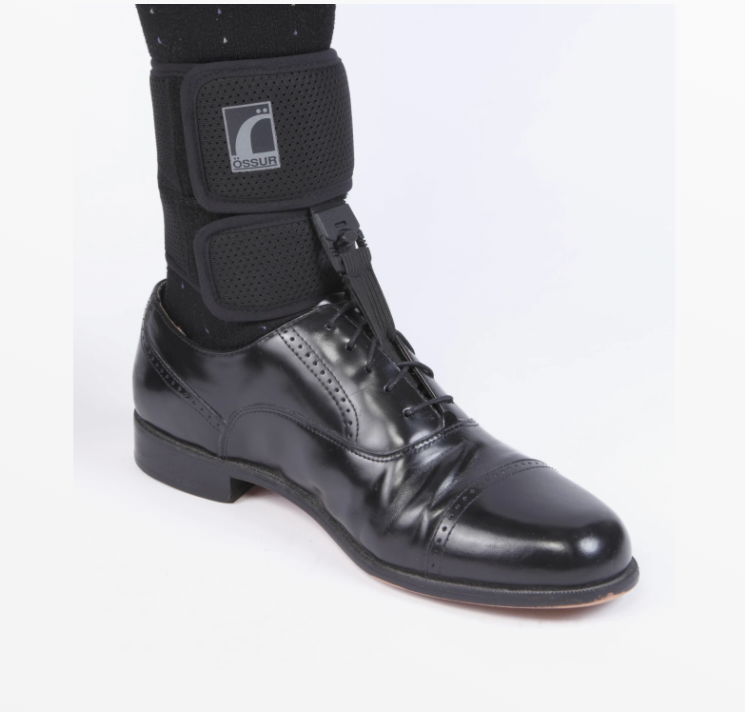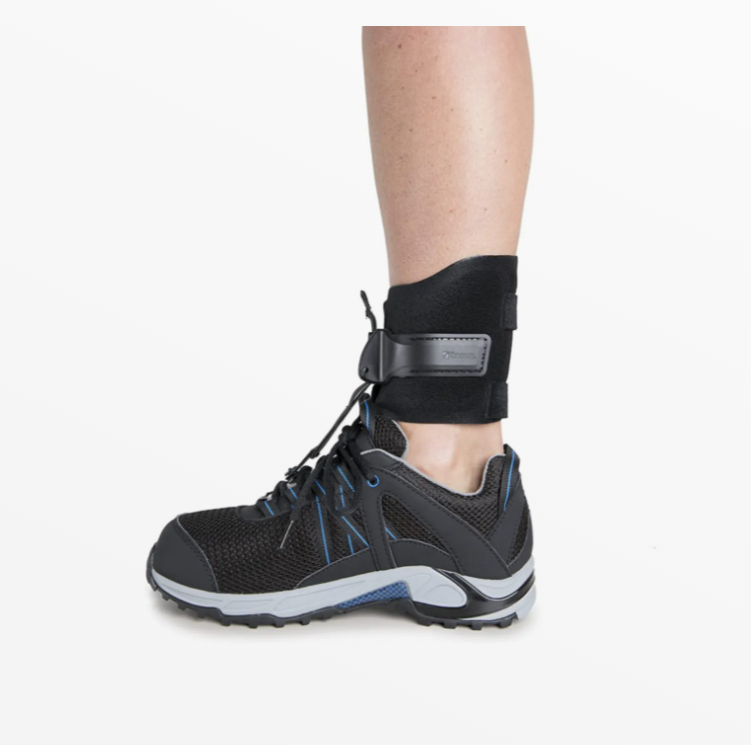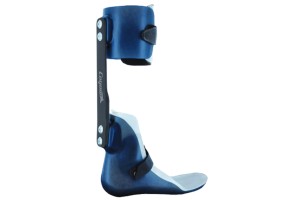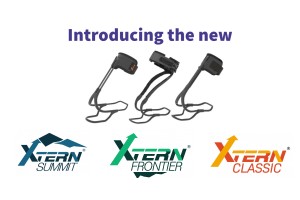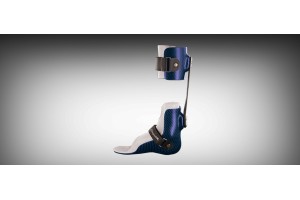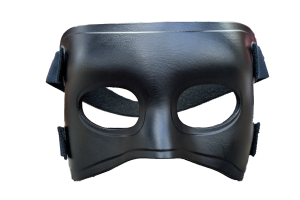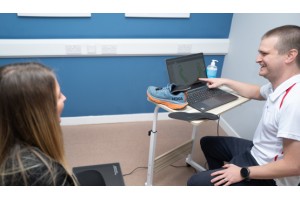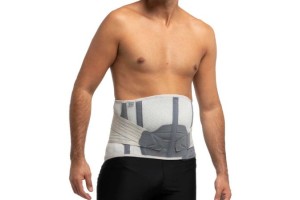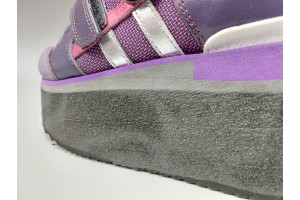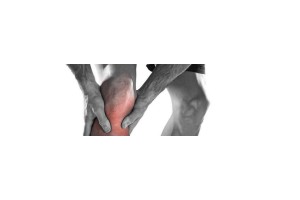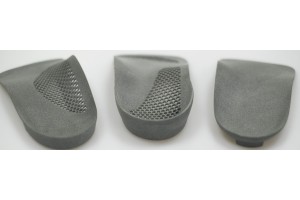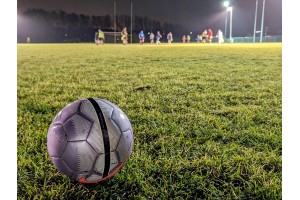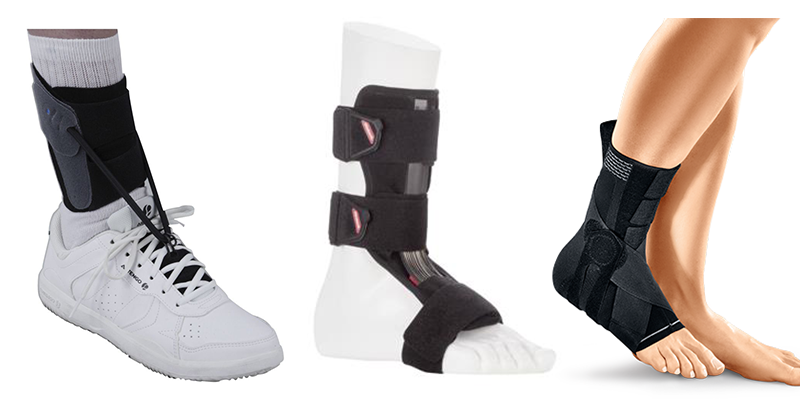
Book an Assessment
Foot drop can have many causes which we have covered in a separate blog but a few such conditions are:
- Trauma to the common peroneal nerve
- Stroke
- Multiple Sclerosis (MS)
- Polio
- Charcot Marie tooth (CMT)
- Nerve impingement in the back
- Guillain–Barré syndrome
- Cerebral palsy (CP)
- Muscular dystrophy
- Spinal cord injury
The most common symptoms of foot drop being an increase in trips and falls or an audible foot slap.
How is Foot Drop Managed?
The orthotic management of Foot Drop is often achieved with the use of an Ankle Foot Orthosis (AFO), sometimes referred to as a splint or brace. The aim of these devics is to lift the foot as it swings through when taking a step. These come in two major classes, either stock or custom-made devices. Both types of appliances have advantages and disadvantages to them.
This guide will deal with a further subset of Stock AFOs, ones that are made in fabric.
What is the advantage of a fabric device?
The main advantage of a fabric AFO is that they are not hard. A regular criticism of plastic or carbon fibre devices is that they are very hard. If not fitting correctly, ‘hard’ splints can rub or prove to be uncomfortable.
Fabric AFOs are generally easier to fit inside shoes or are entirely external to the shoe. If they are fitted within footwear, they do, however, still take up some room.
What are the disadvantages of fabric devices?
The main advantages of fabric devices are also their main disadvantage in that they are soft. The lack of rigidity can be a compromise causing a decrease in support, and often they don’t provide as much lift as a rigid device.
Rigid devices can also influence the knee and provide increased stability, which is not something a fabric device can achieve.
Can I benefit from a fabric AFO?
Generally speaking, the most suitable person is someone with a flaccid foot drop i.e a floppy foot. It is also helpful if you have good knee control and calf strength.
Clinicians will use this class of AFO in various patients after careful assessment and following clinical best practice. We always recommend an assessment prior to purchase of any orthotic device to ensure suitability,
What are my options?
At the Buchanan clinic, we regularly fit and supply many Fabric AFO’s for footdrop in addition to rigid bracing. We don’t believe that one brace is the best but we feel through careful assessment and listening to your needs and aims, we can select the most appropriate device.
This list is not exhaustive but just a selection of the most commonly used devices in our clinic.
Book an Assessment
Prim Airmed
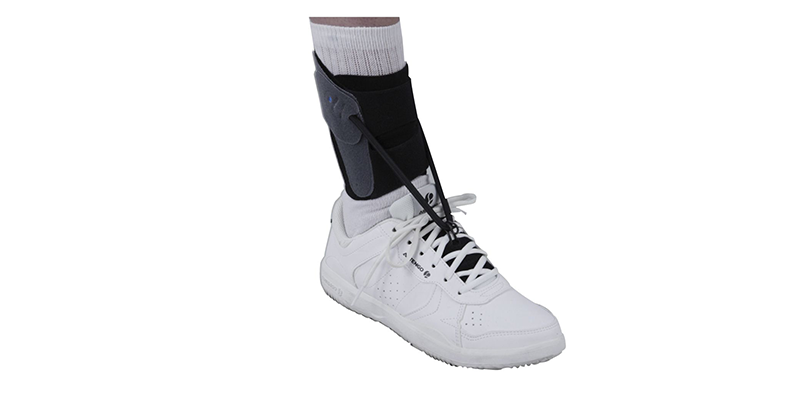
The Textile Drop Foot Orthosis consists of a fabric ankle wrap around the leg just above the ankle, which the elastic section lifts the foot attaches. It is required to be snugly attached to the leg to prevent it from being pulled down by the foot section.
There is a clasp that fits between the laces. While it works best with laces, it can also be used in Velcro shoes with more than one strap.
This commonly used style of AFO is good because it can provide a large amount of lift to the foot as the elastic can be pulled to an appropriate tension to lift the foot.
Generally, they are comfortable as there is nothing placed inside the shoe but require suitable footwear to be worn.
The downside to this style of AFO is that you require the hand strength to pull the Velcro tight, and the ankle section can be pulled down in some leg shapes.
The Airmed Textile foot drop orthosis can be worn without footwear with the addition of a plantar band. However, this will not provide as much lift as when worn with footwear.
We keep this device in stock so it can be tested in an appointment.
Book an Assessment
Ossur Foot-Up
The Ossur Foot-Up is a similar device to the Prim Airmed textile foot drop orthosis and was one of the first such fabric device on the market. Produced by Icelandic company Ossur, the Foot Up name is sometimes use to describe all produce of this nature just like Hoover is used to describe a vacuum cleaner. The Foot up has a plastic insert that goes between the laces and the tongue of the shoe but unlike some other devices the tension in the elastic cant be adjusted. The ankle band is well padded with clip attachment producing between the split in the Velcro strap.
Ossur Rebound Foot Up
The Ossur Rebound Foot-Up builds on the original foot up from 2008 which has a number of improvements over the original foot up. The upgrades make the rebound Foot up a great improvement over the original. We especially like the ability to adjust the tension in the section that lifts the foot something the original was sorely in need of. The improved ability for the Rebound foot up to be put on with one hand is also a much needed improvement. The final improvement is the ability to provide an off centre pull to counteract any ankle instability.
GoOn
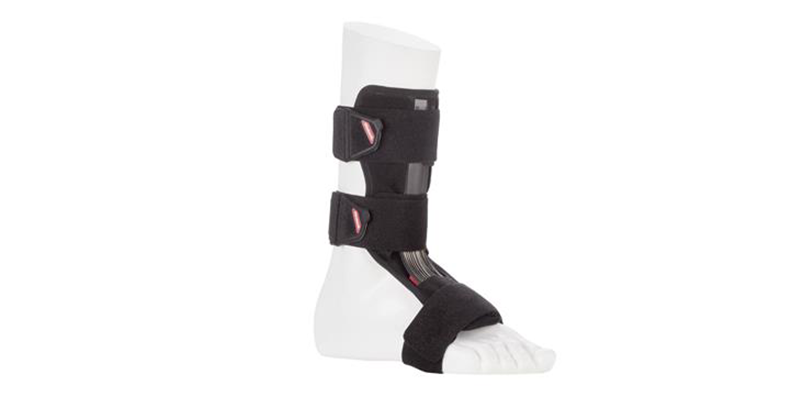
The GoOn from OttoBock attaches directly to the foot, allowing it to be worn with and without shoes. It comprises of ‘spring’ elements that travel down the anterior ankle to the dorsum of the foot.
The spring elements effectively lift the foot up from the top of the foot, unlike many other devices that lift the foot up from the sole.
The GoOn is one size, and fits left and right. Its adjustable straps allow for customisation to individual fit your leg and foot.
As there is no rigid section under the foot, it feels comfortable to wear within footwear but will require footwear with some kind of fastening to allow for adjustment.
We keep this device in stock so you can try one on in an appointment.
Neurodyn Foot lift and Neurodyn Plus
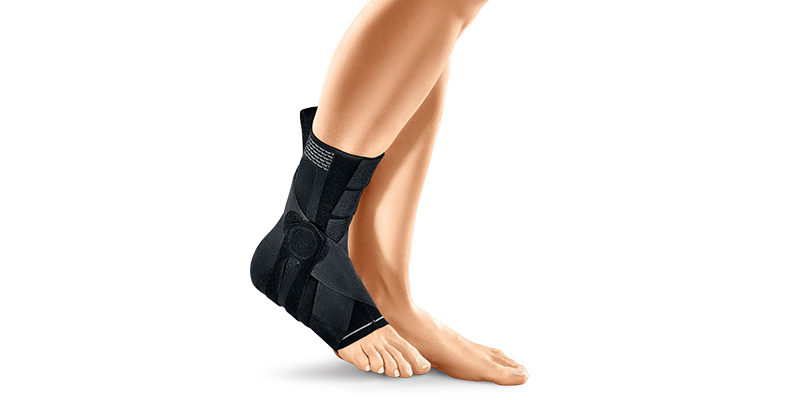
The Neurodyn foot lift orthosis is often described like a sock as you pull it onto the foot then tighten it around the leg and ankle with several Velcro straps.
The Neurodyn lifts the foot by two elastic straps that cross in a figure of 8 fashion and attach at the back of the leg it also has a lateral strap to stabilise the ankle reducing the risk of going over on your ankle.
Like some of the other devices featured, the Neurodyn can be worn without footwear.
To get the most of the device, the elasticated straps need to be pulled tight, so you require good upper limb strength if they are donning the device themselves.
Due to the number of different sizes and left and right versions we don't currently stock this device but would order it to supply
Summary
Fabric AFO’s are highly effective devices in the correct person but they are not without compromises.
Generally, the fabric foot drop AFO’s are best in people with:
- Flaccid foot drop
- No swelling
- Good knee control
- Intact sensation
- No increased tone
Book an Assessment
Further reading
We have posts on other styles of AFO

